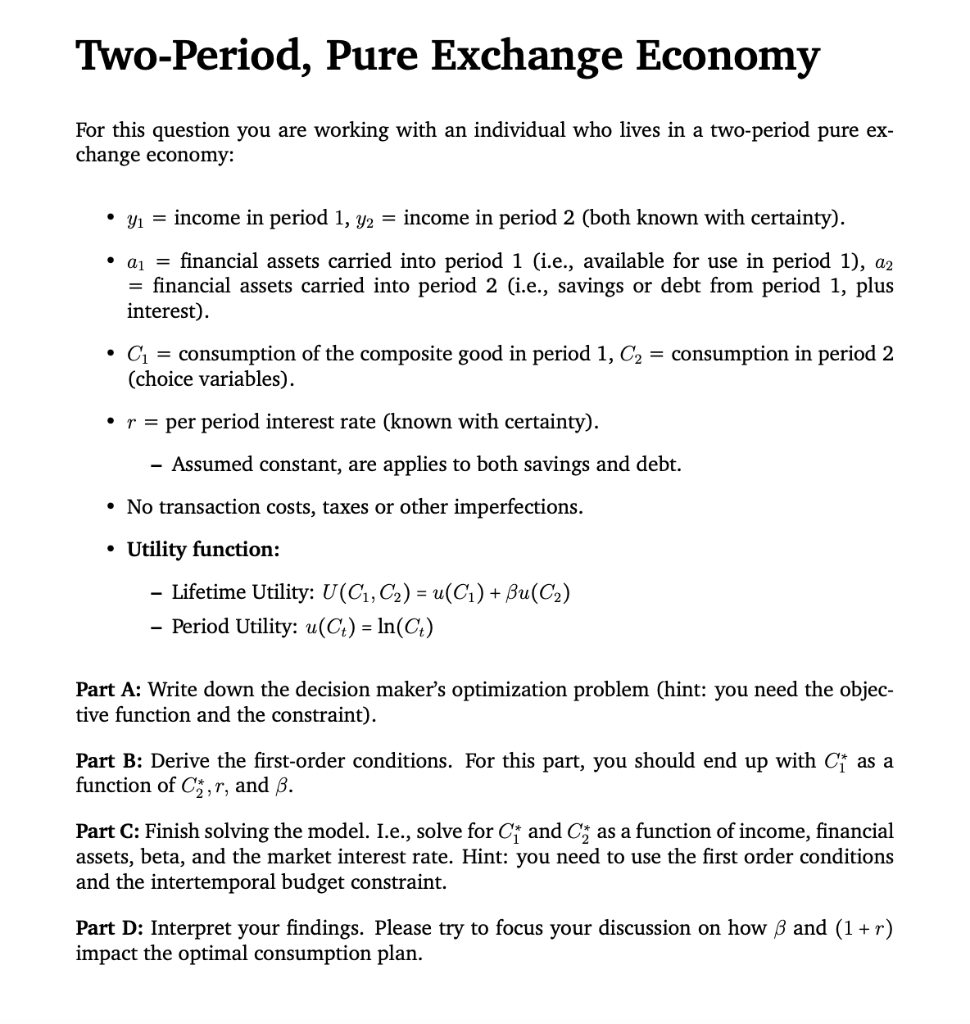
For this question you are working with an individual who lives in a two-period pure exchange economy: - y1= income in period 1,y2= income in period 2 (both known with certainty). - a1= financial assets carried into period 1 (i.e., available for use in period 1), a2 = financial assets carried into period 2 (i.e., savings or debt from period 1, plus interest). - C1= consumption of the composite good in period 1,C2= consumption in period 2 (choice variables). - r= per period interest rate (known with certainty). - Assumed constant, are applies to both savings and debt. - No transaction costs, taxes or other imperfections. - Utility function: - Lifetime Utility: U(C1,C2)=u(C1)+u(C2) - Period Utility: u(Ct)=ln(Ct) Part A: Write down the decision maker's optimization problem (hint: you need the objective function and the constraint). Part B: Derive the first-order conditions. For this part, you should end up with C1 as a function of C2,r, and . Part C: Finish solving the model. I.e., solve for C1 and C2 as a function of income, financial assets, beta, and the market interest rate. Hint: you need to use the first order conditions and the intertemporal budget constraint. Part D: Interpret your findings. Please try to focus your discussion on how and (1+r) impact the optimal consumption plan. For this question you are working with an individual who lives in a two-period pure exchange economy: - y1= income in period 1,y2= income in period 2 (both known with certainty). - a1= financial assets carried into period 1 (i.e., available for use in period 1), a2 = financial assets carried into period 2 (i.e., savings or debt from period 1, plus interest). - C1= consumption of the composite good in period 1,C2= consumption in period 2 (choice variables). - r= per period interest rate (known with certainty). - Assumed constant, are applies to both savings and debt. - No transaction costs, taxes or other imperfections. - Utility function: - Lifetime Utility: U(C1,C2)=u(C1)+u(C2) - Period Utility: u(Ct)=ln(Ct) Part A: Write down the decision maker's optimization problem (hint: you need the objective function and the constraint). Part B: Derive the first-order conditions. For this part, you should end up with C1 as a function of C2,r, and . Part C: Finish solving the model. I.e., solve for C1 and C2 as a function of income, financial assets, beta, and the market interest rate. Hint: you need to use the first order conditions and the intertemporal budget constraint. Part D: Interpret your findings. Please try to focus your discussion on how and (1+r) impact the optimal consumption plan







